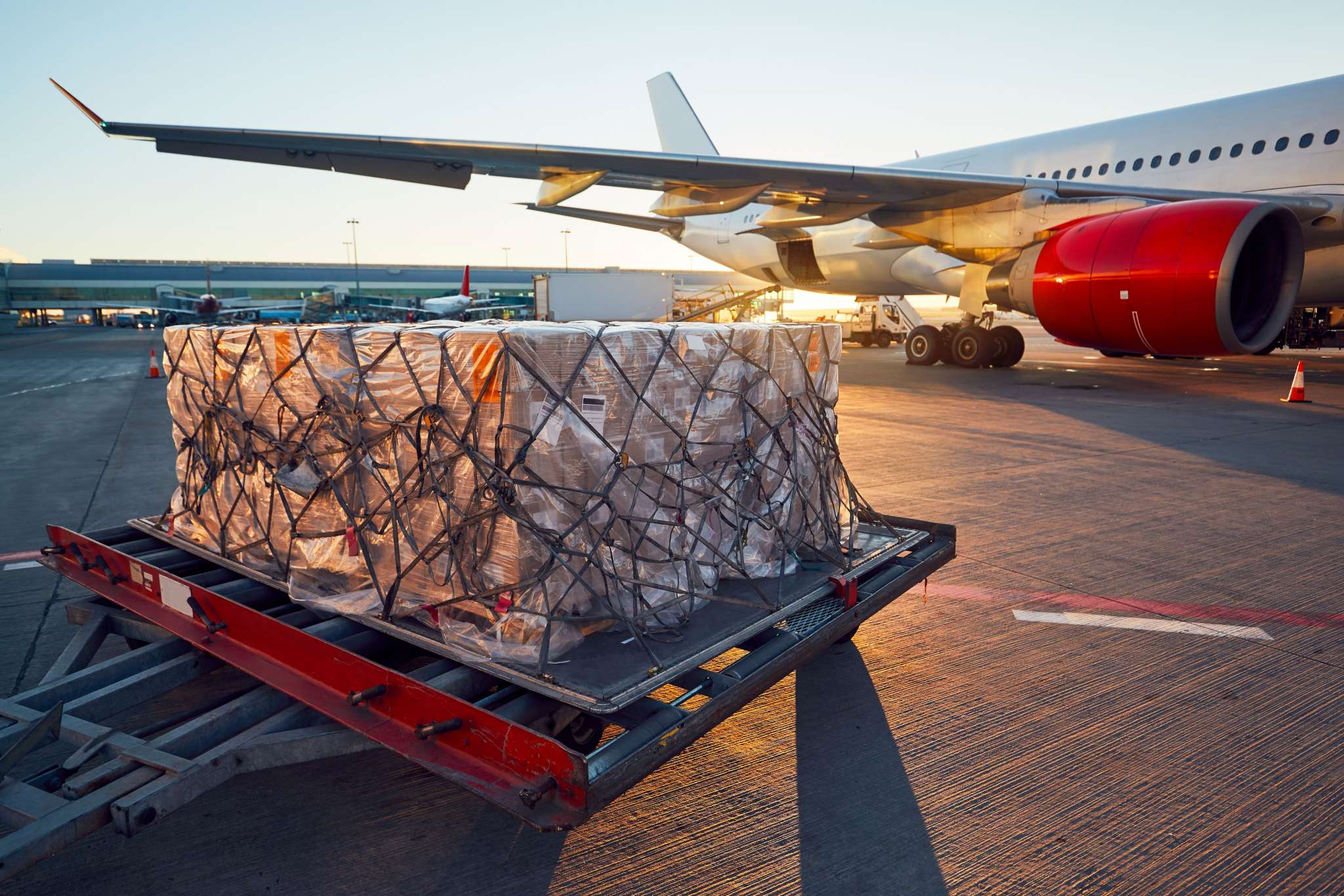Perishable Goods shipment by Air: A Complete Guide
Latest update on 18 June, 2024 by Aaron Kwok– Marketing Analyst at FreightAmigo
In today’s fast-paced global marketplace, the rapid and efficient transportation of perishable goods has become a critical component of modern supply chains. Whether you’re shipping delicate food products, life-saving pharmaceuticals, or other temperature-sensitive cargo, navigating the complexities of air freight can be a daunting task. However, with the right strategies and a deep understanding of industry best practices, you can ensure your valuable perishable goods arrive at their destination fresh, safe, and ready for consumption or use. In this comprehensive guide, we will explore the essential elements of shipping perishable goods by air, providing you with invaluable insights and expert tips to streamline your logistics operations and deliver an exceptional customer experience. From strategic planning and appropriate packaging to compliance with regulations and the importance of partnering with a reliable logistics provider, we’ll equip you with the knowledge and confidence needed to succeed in this highly specialized field.
Want To Compare The Best Express, Air Freight, Sea Freight, Rail Freight & Trucking Rates So As To Have Better Control On Cost?
Defining Perishable Goods
Perishable goods are items that have a limited shelf life and can spoil, decay, or become unsafe if not stored or transported under appropriate conditions. These goods typically require temperature control and timely delivery to maintain their quality and safety. Common examples include fresh fruits and vegetables, dairy products, meat, seafood, flowers, and pharmaceuticals.
Strategic Planning for Perishable Goods Shipments
Assessing Specific Requirements
The first step in planning a successful perishable goods shipment is to thoroughly understand the unique requirements of your cargo. This includes:
- Identifying the ideal temperature range for your goods
- Determining the expected shelf life and sensitivity to handling
- Researching any regulatory obligations or certifications needed
This information will guide your packaging choices, transportation options, and overall logistics strategy to ensure the safe and timely delivery of your perishable goods.
Choosing the Right Logistics Partner
Selecting a reputable and experienced logistics provider is crucial when shipping perishable goods by air. Look for a partner with a proven track record in handling temperature-sensitive cargo and a deep understanding of the relevant regulations and best practices. Key considerations include:
- Robust quality control measures and temperature-controlled facilities
- Documented procedures for maintaining appropriate temperature conditions during transportation
- Expertise in navigating customs clearance and regulatory requirements
- A network of reliable airline partners and streamlined booking processes
- Proactive communication and visibility throughout the shipping process
By partnering with a logistics provider that specializes in perishable goods, you can leverage their expertise and resources to mitigate risks, optimize your supply chain, and deliver an exceptional customer experience.
Packaging and Labeling for Perishable Goods
Selecting Appropriate Packaging Materials
Choosing the right packaging is crucial for preserving the integrity of perishable goods during air transportation. Insulated containers, such as coolers or temperature-controlled packaging, should be used to maintain the desired temperature range throughout the journey. Consider the following factors when selecting your packaging:
- Perishable item’s specific temperature requirements
- Duration of transportation and potential external factors
- Availability of temperature control solutions (e.g., gel packs, dry ice)
- Compatibility with airline cargo handling procedures
Ensure that your packaging is sturdy, well-insulated, and can withstand the rigors of air travel without compromising the condition of your goods.
Labeling and Handling Instructions
Clear and accurate labeling is essential for perishable shipments. Ensure that your packages are clearly marked with the following information:
- Product description
- Origin and destination
- Handling instructions (e.g., “Perishable,” “This Side Up”)
- Temperature requirements (e.g., “Keep Refrigerated”)
- Contact details for the shipper or logistics provider
This labeling will help handlers identify the special requirements of your cargo and take the necessary precautions to maintain the appropriate conditions throughout the transportation process.
Temperature Control and Monitoring
Maintaining the Ideal Temperature
Consistent temperature control is crucial for preserving the quality and safety of perishable goods during air transportation. Work closely with your logistics provider to ensure proper temperature control throughout the entire shipping process. This may involve:
- Pre-cooling your perishable goods to the recommended temperature before transportation
- Utilizing temperature-controlled packaging or refrigerated containers
- Monitoring temperature fluctuations during transit using data loggers or other monitoring devices
Adhering to the specific temperature requirements for your goods is essential to prevent spoilage and ensure they arrive in optimal condition.
Proactive Temperature Monitoring
Incorporating temperature monitoring devices into your perishable goods shipments can provide valuable data and insights throughout the transportation process. These devices, such as data loggers, can track and record temperature readings at regular intervals, allowing you to:
- Intervene and take corrective action if temperature deviations occur
- Provide documentation of temperature conditions for regulatory compliance
- Analyze the data to identify any issues or areas for improvement in your logistics operations
By leveraging temperature monitoring, you can enhance the visibility and control over your perishable goods shipments, ultimately improving the quality and safety of your deliveries.
Timing and Scheduling Considerations
Minimizing Transit Time
Time is of the essence when shipping perishable items, as prolonged transit can lead to spoilage and quality degradation. Work closely with your logistics provider to establish a suitable transportation schedule that minimizes the time your goods spend in transit. Consider the following strategies:
- Opt for direct flights or the shortest possible routing to reduce overall transit time
- Explore expedited shipping options, such as next-day or same-day delivery, when necessary
- Coordinate the timing of your shipment to ensure timely delivery to the airport and prompt loading onto the aircraft
By minimizing the time your perishable goods spend in transit, you can maximize their freshness and shelf life upon arrival at the destination.
Accounting for Potential Delays
While minimizing transit time is essential, it’s also crucial to account for potential delays and disruptions that can impact the delivery of your perishable goods. These may include:
- Customs clearance and inspection processes
- Weather-related flight delays or cancellations
- Unexpected handling or transportation issues
To mitigate the risks of these delays, build in buffer time in your scheduling and maintain open communication with your logistics provider. This will enable you to quickly address any issues that arise and ensure your perishable cargo reaches its destination as planned.
Leveraging Temperature Monitoring and Data Analysis
Incorporating Temperature Monitoring Devices
Integrating temperature monitoring devices into your perishable goods shipments can provide invaluable data and insights throughout the transportation process. These devices, such as data loggers, can track and record temperature readings at regular intervals, enabling you to:
- Intervene and take corrective action if temperature deviations occur
- Provide documentation of temperature conditions for regulatory compliance
- Analyze the data to identify any issues or areas for improvement in your logistics operations
By leveraging temperature monitoring, you can enhance the visibility and control over your perishable goods shipments, ultimately improving the quality and safety of your deliveries.
Data-Driven Optimization
The data collected from temperature monitoring devices can be a powerful tool for optimizing your perishable goods transportation processes. By analyzing the temperature data, you can:
- Identify patterns and trends in temperature fluctuations during transit
- Pinpoint areas of concern or vulnerabilities in your supply chain
- Evaluate the effectiveness of your packaging and temperature control solutions
- Collaborate with your logistics provider to implement targeted improvements
This data-driven approach allows you to make informed decisions, address any issues proactively, and continuously enhance the efficiency and reliability of your perishable goods shipments.
Partnering with a Reliable Logistics Provider
Importance of a Specialized Partner
Choosing the right logistics provider is crucial when shipping perishable goods by air. Look for a partner with a proven track record in handling temperature-sensitive cargo and a deep understanding of the relevant regulations and best practices. Key considerations include:
- Robust quality control measures and temperature-controlled facilities
- Documented procedures for maintaining appropriate temperature conditions during transportation
- Expertise in navigating customs clearance and regulatory requirements
- A network of reliable airline partners and streamlined booking processes
- Proactive communication and visibility throughout the shipping process
By partnering with a logistics provider that specializes in perishable goods, you can leverage their expertise and resources to mitigate risks, optimize your supply chain, and deliver an exceptional customer experience.
Collaboration and Communication
Maintaining clear and open communication with your logistics provider is essential for the successful transportation of perishable goods. Stay in constant contact to receive real-time updates on the status of your shipment and address any issues that may arise promptly. This collaborative approach will enable you to:
- Respond quickly to temperature deviations or other problems
- Coordinate timely delivery and ensure your goods reach their destination in optimal condition
- Provide valuable feedback and work together to continuously improve your logistics operations
By fostering a strong partnership with your logistics provider, you can navigate the complexities of perishable goods transportation with confidence and ensure a seamless delivery experience for your customers.
Conclusion
Shipping perishable goods by air is a highly specialized and time-sensitive process that demands meticulous attention to detail. By understanding the unique requirements of your cargo, adhering to relevant regulations, implementing robust temperature control and monitoring systems, and partnering with a reliable logistics provider, you can overcome the challenges of perishable goods transportation and deliver your valuable products to their destination in optimal condition. Remember, the successful shipment of perishable goods is not just about getting the cargo from point A to point B – it’s about maintaining the integrity, quality, and safety of your products throughout the entire journey. By applying the strategies and best practices outlined in this comprehensive guide, you can position your business as a leader in the industry, providing your customers with a superior experience and strengthening your competitive edge in the global marketplace.
If You Wish To Ship By Air , Please Go To The FreightAmigo Page For Inquiries
Read more:
Shipping from Hong Kong to Laem Chabang (THLCH) | FreightAmigo
How to Ship Food and Beverage | Comprehensive Guide | FreightAmigo
Shipping Food and Beverage | Importance & Steps | FreightAmigo
If you have any inquiries on logistics / supply chain, feel free to contact FreightAmigo now:
Chat with us online | Hotline: +852 28121686 | WhatsApp: +852 27467829









































